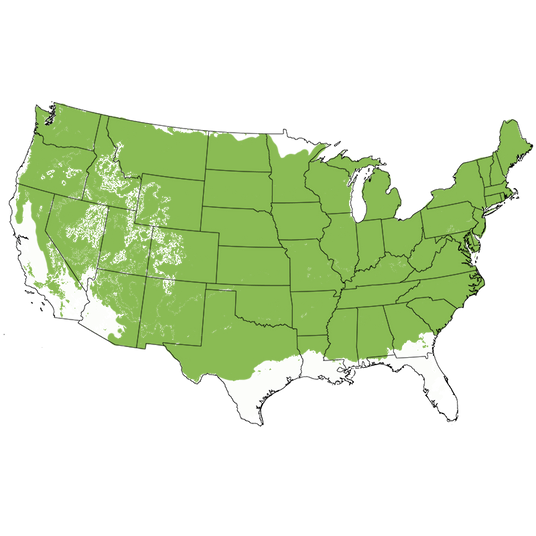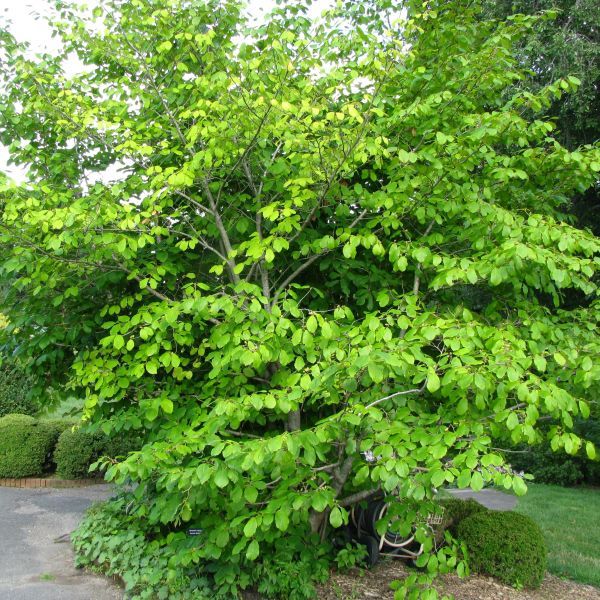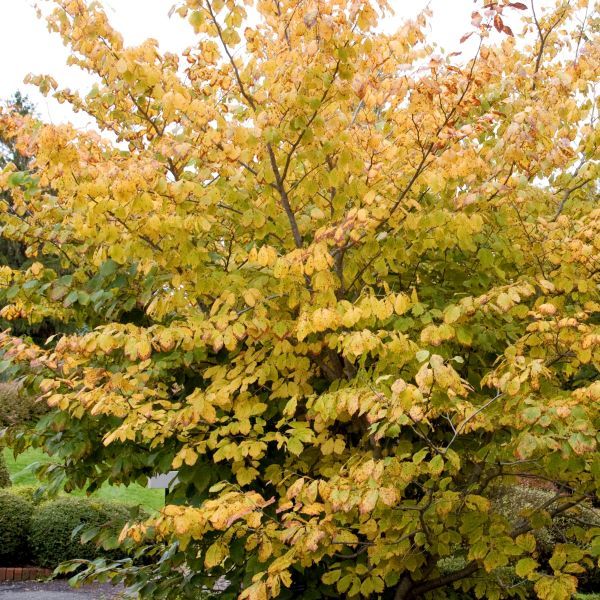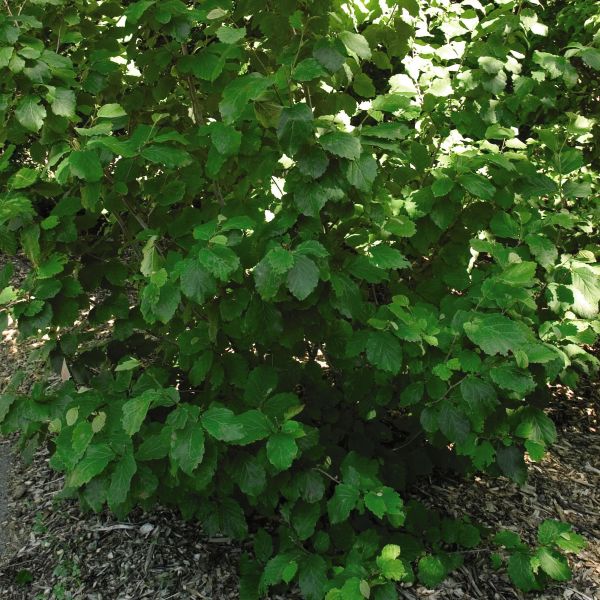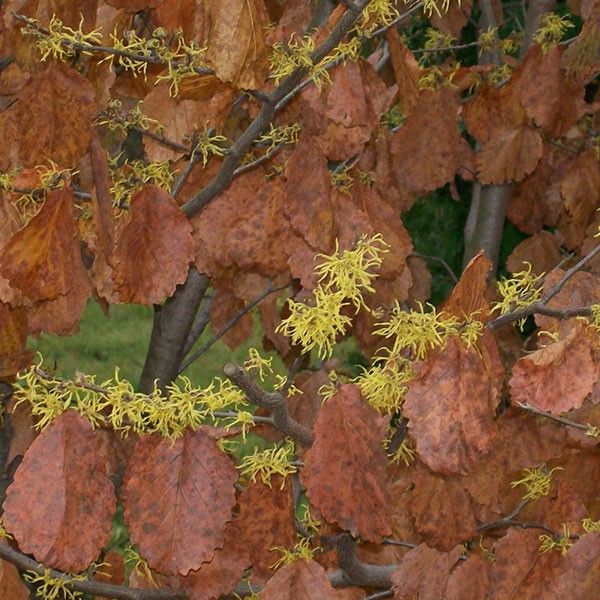Common Witch - hazel
Hamamelis virginiana
Plant Sentry™
Plant Sentry™

Plant Sentry™ Protected
Your order is protected by our compliance system that:
- Prevents restricted plants from shipping to your state
- Ensures plants meet your state's agricultural requirements
- Protects gardens from invasive pests and diseases
Delivery and Shipping
Delivery and Shipping
Delivery and Shipping
Fast, Safe Plant Delivery
Ships in 3-4 business days • Tracking provided • Weather protected
| Under $50 | $9.99 |
| $50 - $99.99 | $14.99 |
| $100 - $149.99 | $16.99 |
| $150 - $198.99 | $24.99 |
| $199+ | FREE |
✓ Zone-specific timing • ✓ Professional packaging • ✓ Health guarantee
Understanding Plant Options
Nature Hills offers plants in two main formats:
- Container Plants: Grown in pots with soil, sized by container volume and plant age
- Bare Root Plants: Dormant plants without soil, sized by height measurements
Container Plant Sizes
Container sizes indicate plant age and growing capacity rather than liquid volume equivalents. Our containers follow industry-standard nursery "trade gallon" specifications, which differ from standard liquid gallon measurements.
Young Plants (6 months to 18 months old)
| Container Size | Actual Volume | Metric Equivalent |
|---|---|---|
| 2" x 2" x 3" | 0.18 - 0.21 dry quarts | 0.20 - 0.23 dry liters |
| 4" Container | 0.31 - 0.87 dry quarts | 0.35 - 0.96 dry liters |
| 4.5" Container | 0.65 dry quarts | 0.72 dry liters |
| 6" Container | 1.4 dry quarts | 1.59 dry liters |
| 1 Quart | 1 dry quart | 1.1 dry liters |
| 5.5" Container | 1.89 dry quarts | 2.08 dry liters |
Established Plants (18 months to 2.5 years old)
| Container Size | Actual Volume | Metric Equivalent |
|---|---|---|
| 2 Quart | 2 dry quarts | 2.2 dry liters |
| #1 Container | 2.26 - 3.73 dry quarts | 2.49 - 4.11 dry liters |
| 5" x 5" x 12" | 3.5 - 4.3 dry quarts | 3.85 - 4.74 dry liters |
Mature Plants (2-4 years old)
| Container Size | Actual Volume | Metric Equivalent |
|---|---|---|
| #2 Container | 1.19 - 1.76 dry gallons | 5.24 - 7.75 dry liters |
| #3 Container | 2.15 - 2.76 dry gallons | 8.14 - 12.16 dry liters |
Large Plants (3-5 years old)
| Container Size | Actual Volume | Metric Equivalent |
|---|---|---|
| #5 Container | 2.92 - 4.62 dry gallons | 12.86 - 20.35 dry liters |
| #6 Container | 5.25 - 6.01 dry gallons | 23.12 - 26.42 dry liters |
| #7 Container | 5.98 - 6.53 dry gallons | 26.34 - 28.76 dry liters |
Bare Root Plants
Bare root plants are sold by height from the root system to the top of the plant. Plants may exceed minimum height requirements.
Common Sizes:
- Trees: 1 foot, 2 feet, 3 feet, 4 feet, 5 feet, 6 feet
- Shrubs & Perennials: 1 foot, 18 inches, 2 feet
Important Notes
Container Volume Specifications
- Trade Gallon Standard: Our containers follow industry-standard "trade gallon" specifications established by the American National Standards Institute (ANSI Z60.1) for nursery stock
- Volume Variations: Actual soil volume may vary due to plant root systems and growing medium settlement
- Age Indicators: Container size primarily indicates plant age and maturity rather than liquid volume equivalents
Growing Conditions
- Plant size can vary based on variety and growing conditions
- Container size helps indicate plant maturity and establishment level
- Larger containers generally mean more established root systems and faster landscape establishment
Seasonal Availability
- Bare root plants are available seasonally when dormant
- Container plants are available throughout the growing season
- Specific varieties may have limited availability in certain sizes
Questions?
For questions about specific plant sizes or availability, please contact our plant experts who can help you choose the right size for your landscape needs.

Plant Sentry™ Protected
Your order is protected by our compliance system that:
- Prevents restricted plants from shipping to your state
- Ensures plants meet your state's agricultural requirements
- Protects gardens from invasive pests and diseases
Plant Profile & Growing Essentials
Cold hardy, Native, Fall Color/Interest, Flowering, Fragrant, Deer-resistant, Drought resistant, and Hedge/Screen
Specifications
Specifications
-
Botanical Name
-
Height
-
Width
-
Growing Zones
-
Growth RateSlow
-
Flower Color
-
Leaf Color
-
Fall Color
-
NativeYes
-
Pollinator FriendlyYes
-
Pollinator Required
-
FragrantYes
-
Bloom PeriodEarly Fall, Late Fall, Late Winter
Planting & Care
Planting & Care
Shade Loving Common Witch-Hazel Yellow Fall Flowers
- Bright Yellow Flowers in Autumn
- Beautiful Dark-Green Leaves
- Harvest Yellow Fall Color
- Wildlife Interest
- Shade Loving, Tolerates Sun
- Hardy Native
- Large Shrub or Smaller Tree
- Tolerates Moist Soils and Clay Soils Well
- Seldom Severely Damaged by Deer
For a last flowering Hurrah!
to wind down your growing season, take a look at one of North America’s most unusual native shrubs. Common Witch-Hazel (Hamamelis virginiana) is extraordinary in its flowering habits and produces the most amazing flowers.
The fragrant flowers look like bright yellow ribbons draped up and down, all along the stems. You’ve never seen anything like them! And they bloom in fall at the very end of the season, lasting well into early winter.
You can think of Common Witch-Hazel as the Forsythia of the Fall
. If you love color, you’ll crave them for interest just as all the other deciduous plants in your garden is winding down and heading into dormancy. The flowers appear in late October to early December!
Use them to decorate your Fall Garden. They seem to glow in the landscape, with absolutely stunning bright gold fall color on the lovely leaves. Common Witch-Hazel will be a wonderful conversation starter at your football watch parties and get-togethers around the fire pit.
They’ll do fine in full sun, but really do their very best in shade or partial shade. How nice is that?
After all, mature trees, neighboring houses and sheds cast long shadows across lots of landscapes. Nature Hills plant experts answer questions on shade plants every week!
So many flowering shrubs do their best in full sunlight—with at least 6 hours of direct light a day. We know it can be challenging to create your backyard paradise if that kind of sunlight isn’t available.
This shade loving plant is particularly prized by avid plant lovers. These deciduous plants can be grown as a shrub or small tree.
Unlike most plants, this shrub presents a cheery picture in the drab winter landscape and in shady spots in your yard. In fact, many times its slender yellow petals are the only sign of color in the dormant landscape.
Any last-minute butterflies or beneficial pollinators in your neighborhood will be so grateful for the nectar source! Common Witch-Hazel is an important host plant for butterflies. Birds eat the maturing fruit and seeds.
You’ll love these standout shrubs in your late season shade garden. Order Common Witch-Hazel from Nature Hills today!
How to Use Common Witch-Hazel in the Landscape
Use these unique, deciduous shrubs at the edge of the woods and in the understory of larger mature trees. They will look great in an informal group of three or five. You’ll love the bright fall color and late fall interest.
This is one of the most salt tolerant shrubs and are excellent to use along roadways and streets for screening and for sound absorption, as well. The large scale and broad form makes it an excellent plant for screening on a grand scale.
Witch Hazel also works as a wonderful specimen plant in areas where there is a rich, moist, mulched soil and can be underplanted with plenty of Hosta, Astilbe, or other shade loving perennials or ground covers to finish the landscape.
It can be grown as a large shrub or trained into a small tree form by removing the lowest limbs to raise the canopy. If you have a shady side yard, try one at the corner of your house as an interesting focal point.
It can tolerate low, wet spots in the landscape. They are magnificent along a pond, or plant them in mass to prevent erosion along creekbanks.
#ProPlantTips for Care
This is a hardy plant and won't require a great deal of care. Its early growth is slow but steady.
Give it a moderate amount of water regularly. They enjoy even moisture, and it’s important not to let it dry out. Apply a thick layer of mulch over the root system to keep them cool and moist.
Although it will tolerate full sun, it’s best to give it a shady location for optimal performance. It will tolerate clay soils. They love well-drained soil that is rich in organic material. Top dress with compost and make sure you use mulch over the roots.
Prune in early spring, if needed for size control. Normally, the plant is allowed to grow in its natural form with little pruning. We recommend you plan carefully to allow your Common Witch-Hazel to grow to the mature height and spread listed on the Plant Highlights.
Don’t let another year go by without adding the mystique and charm of this fabulous native shrub to your landscape. Give it a prominent position, those wild flowers are incredibly showy.
Order Common Witch-Hazel today and enjoy!
